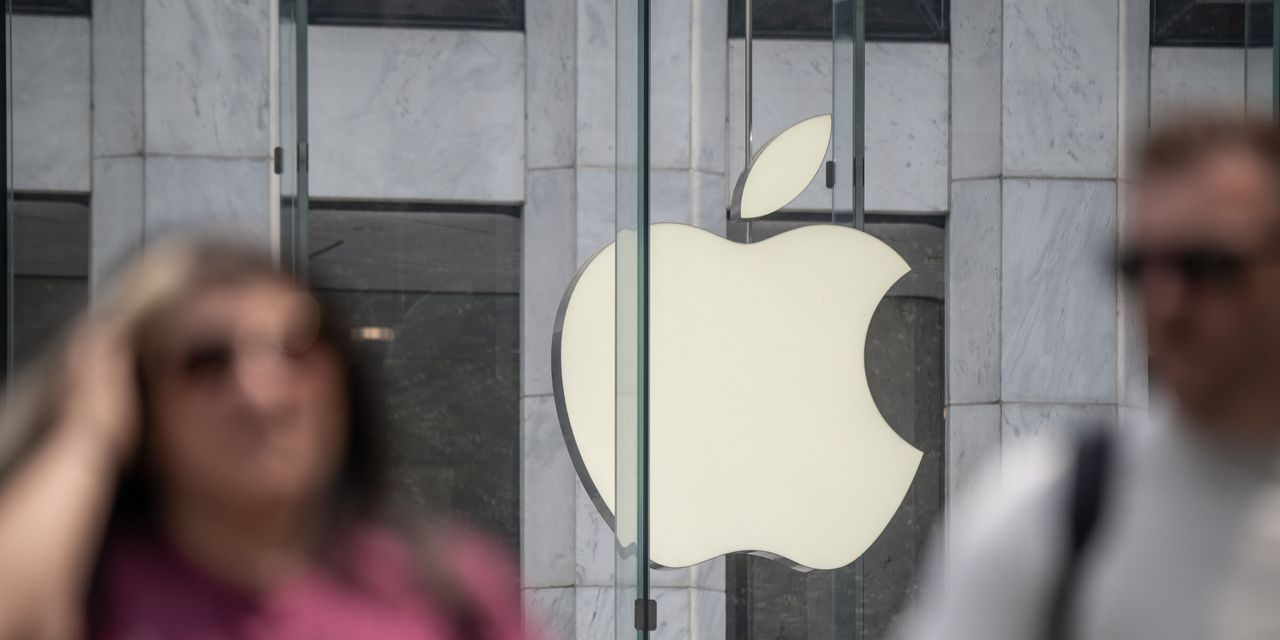The market’s case of bad breadth is getting better—but it’s still a megacap world until proven otherwise.
It’s been quite a turnaround for the stocks down the market-cap spectrum. The equal-weighted
S&P 500
is up 6% in the past three weeks, outperforming the market capitalization-weighted version of the index by some three percentage points. That has extended its 2023 gain to nearly 8%—which is still only half the regular S&P 500’s year-to-date rise.
That’s a big change from much of the first half of the year, when regional banking turmoil, the artificial-intelligence investing frenzy, and the angst over contentious debt-ceiling negotiations in Washington pushed investors into a narrow group of megacap technology companies—and basically nothing else. The seven largest U.S. stocks, including
Apple
(ticker: AAPL) and
Nvidia
(NVDA), have trounced the market in 2023, adding hundreds of billions of dollars of value and propelling the S&P 500 higher, even as the average stock in the index hardly budged.
A market driven by just a handful of stocks can only go on for so long. But there’s also a shift in sentiment behind the improving performance of a broader group of stocks. Recent data on the U.S. economy has come in strong. That’s good news for smaller companies, which are perceived to be more sensitive to the vagaries of the domestic economy. Banks make up a bigger portion of the small-cap
S&P 600 index
than the large-cap S&P 500, and much of the pressure on the sector seems to have abated.
“As the regional banking crisis fades, the better-than-expected economic news is once again becoming a tailwind for small-caps,” writes Ed Clissold, chief U.S. strategist at Ned Davis Research. He notes that the S&P 600’s earnings yield—the inverse of the index’s price/earnings ratio—is near a record low versus the S&P 500’s.
The rally has even reached what is possibly the riskiest, most sentiment-driven area of the market: meme stocks. These tend to be companies with low-quality fundamentals and often with high short interest in their stocks.
Carvana
(CVNA) is up 29% in a week, while
Coinbase Global
(COIN) has soared 33%. The
Roundhill MEME
exchange-traded fund (MEME) has added 13%. That compares with a less-than-1% gain for the
Consumer Staples Select Sector SPDR
ETF (XLP), which includes staid names like
Procter & Gamble
(PG),
PepsiCo
(PEP), and
Costco Wholesale
(COST).
Past periods of such dramatic outperformance by meme stocks over boring old consumer staples have been followed by near-term declines in the S&P 500, according to Jonathan Krinsky, chief market technician at BTIG.
“It’s a double-edged sword when we start seeing some of the lower-quality names rally,” Krinsky writes. “Obviously, it’s encouraging to see breadth broaden out…. When we see a surge of this magnitude, however, especially relative to a defensive group like consumer staples, it often indicates a chase for what hasn’t moved and can move the most, and this often is the tail end of the move.”
It wouldn’t take much for market breadth to narrow again. The economy could stumble—finally—or inflation could reaccelerate, raising the odds of additional Federal Reserve tightening. If investors start to worry more about a recession, hiding out in megacap tech stocks and other big, stable businesses would begin to look mighty attractive again. “Policy and economic risks keep the tactical rotation out of large-caps on a short leash,” Clissold writes.
It remains to be seen just how short.
Write to Nicholas Jasinski at [email protected]
Read the full article here



